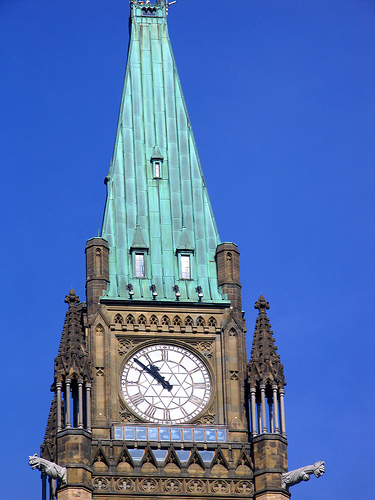UPDATED: An Aboriginal Who’s Who of Canadian Politics

After a record number of Aboriginal candidates participated in the last federal election, just how browner is Canada’s parliament?
As you can see in this updated ‘Who’s Who’ of Aboriginal politicians in Canada’s Parliament, the numbers have risen slightly, but the biggest gains have been within the Conservative ranks. Read on!
The House of Commons
Made up of 308 (By 2012, this number will rise to 338) Members of Parliament (MPs), the House of Commons is arguably the most visible arena of Canadian politics. It’s where bills are born and often fiercely debated (until they die because of prorogation). But just how many Aboriginal voices ring across those hallowed halls? Good ask!
As of December 2011, of the 308 MPs, seven are Aboriginal (five of them Conservatives):
- Leona Aglukkaq (Inuit), CON
- Rod Bruinooge (Metis), CON
- Jonathan Genest-Jourdain (Innu), NDP
- Rob Clarke (First Nations), CON
- Shelly Glover (Metis), CON
- Peter Penashue (Innu), CON
- Romeo Saganash (Cree) NDP
A total of 31 Aboriginal MPs have been elected to the House of Commons over the years, beginning with Conservative member Angus McKay (Metis) way back in 1871! Check out the full list on the Parliament of Canada website.
The Senate
Consisting of 105 members appointed by the Governor General (on the advice of the PM), the Senate is the upper house of Parliament, aka the “sober house of second thought.” Here, bills are sent for scrutiny before either being returned to the House of Commons to become law, or outright rejected. (Bills are only occasionally first introduced in the Senate).
So how many Aboriginal people are in the Senate? Glad you asked! As of December 2011, just six of the 105 (non-elected) Senators are Aboriginal: two Conservative, two NDP, two Liberal. How balanced!
Let’s meet them:
- Patrick Brazeau (First Nations), CON
- Lillian Dyck (First Nations), LIB
- Sandra Lovelace Nicholas (First Nations), LIB
- Nick Sibbeston (First Nations), LIB
- Gerry St. Germaine (Metis), CON
- Charlie Watt (Inuit), LIB
All together, 15 Aboriginal people have sat in the Senate, beginning with Conservative Richard Charles Hardisty (Metis), way back in 1888!
Committees
While all the yelling and hammering of the House may seem exciting (and definitely gets the most airtime), much of the actual work of government takes place in Committees. This is where policies get reviewed, budgets hashed out, and reports get produced.
In the House of Commons, issues relating to Aboriginal people are discussed in (where else?) the Standing Committee on Aboriginal Affairs and Northern Development (AANO).
As of December 2011, the 11-member AANO committee includes:
- Chris Warkentin, (Chair), CON
- Carolyn Bennett, (Vice-Chair), LIB
- Dennis Bevington, (Vice-Chair), NDP
And…
- Ray Boughen, CON
- Rob Clarke, (Cree), CON
- Linda Duncan, NDP
- Jonathan Genest-Jourdain, (Innu), NDP
- Carol Hughes, NDP
- LaVar Payne, CON
- Greg Rickford, CON
- Kyle Seeback, CON
As you can see, only two AANO committee members are Aboriginal.
Up in the Senate, the primary place of business for Aboriginal issues is the Standing Committee on Aboriginal Peoples, namely:
- Gerry St. Germaine (Metis), Chair, CON
- Lillian Dyck (First Nations), Deputy Chair, LIB
And…
- Salma Ataullahjan, CON
- Patrick Brazeau (First Nations), CON
- Larry Campbell, LIB
- Jacques Demers, CON
- Elizabeth Hubley, LIB
- Sandra Lovelace Nicholas (First Nations), LIB
- Don Meredith, CON
- Dennis Patterson, CON
- Rose-May Poirier, CON
- Nancy Greene Raine, CON
Four members, or a third, of this 12-person Committee are Aboriginal.
So there you have it. Depending on who you ask, Canada’s Parliament is either much browner than they thought, or altogether way too brown for their liking.
Regardless, it can be interesting stuff for political wonks like me and — if you’ve read this far — you too!
[Image via jpctalbot]

